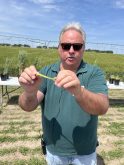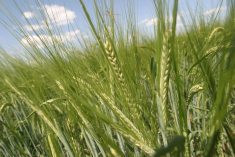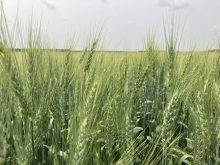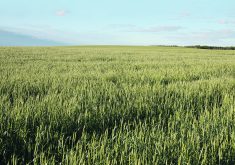Timing is not everything | Decision to spray most important, followed by timing and product type
The benefits of fungicide come down to one crucial decision, said plant pathologist Mike Harding.
Go or no go.
Research shows that the decision to spray or not to spray represents about 70 percent of the risk versus reward in using fungicides.
About 25 percent relates to the timing of application and only about five percent depends on product.
Farmers should make their decisions accordingly, Harding told those at a Jan. 16 agronomy update in Lethbridge.
“We don’t need to spend 90 percent of our time worrying about five percent of the impact.”
Read Also

Government, industry seek canola tariff resolution
Governments and industry continue to discuss how best to deal with Chinese tariffs on Canadian agricultural products, particularly canola.
If spraying is planned and timing determined, product selection is a process of using a registered product, noting the chemical group to avoid resistance problems and then checking the label to see what’s best to address the disease.
Harding listed the top five reasons fungicides don’t provide expected results: application problems, timing, misdiagnosis, environmental effects and limitations of the fungicide.
Application problems top the list in part because of the variables involved. Spraying must align with the disease cycle and if growers lack a good understanding of the disease, application will suffer, said Harding.
With various options in sprayer speed, boom height, water volume, and nozzle selection, the product might not reach the target.
“If we’re not going to aim the gun, we might as well not pull the trigger,” he said.
Timing depends on the disease cycle and whether the fungicide is a protectant or a cure. Protectants have to be applied before major problems develop, but weather plays a major role.
Timing is also a factor in chemical storage and in mixing with compatible products.
Harding urged growers to scout frequently to identify specific problems. Several fungal diseases have similar in-crop symptoms and some crop conditions only appear to be caused by fungus.
Environmental effects that limit fungicide results are obvious: temperature, precipitation, humidity and wind.
Fungicide limitations are the last of the top five reasons for potentially disappointing results. Most work on contact and won’t spread through the plant. Some provide suppression rather than control and some fungi have resistance.
Harding told growers that crop rotation is their best protection against major crop disease outbreaks.
“If you have a diverse and longer rotation, it makes your system more predictable. It doesn’t lead to explosions of disease problems or things that blow up.
“So it’s not walking on the razor’s edge. It’s being in a place that’s a little more predictable and easier to manage.”
He said crop rotation provides a solid foundation for other farm management decisions. As an example, he showed research indicating blackleg severity can be reduced by 50 percent in a longer and more diverse crop rotation, in both susceptible and resistant seed varieties.
“Fungicide is something that’s most successful when it’s built upon that solid foundation of a diverse and long crop rotation.”


















